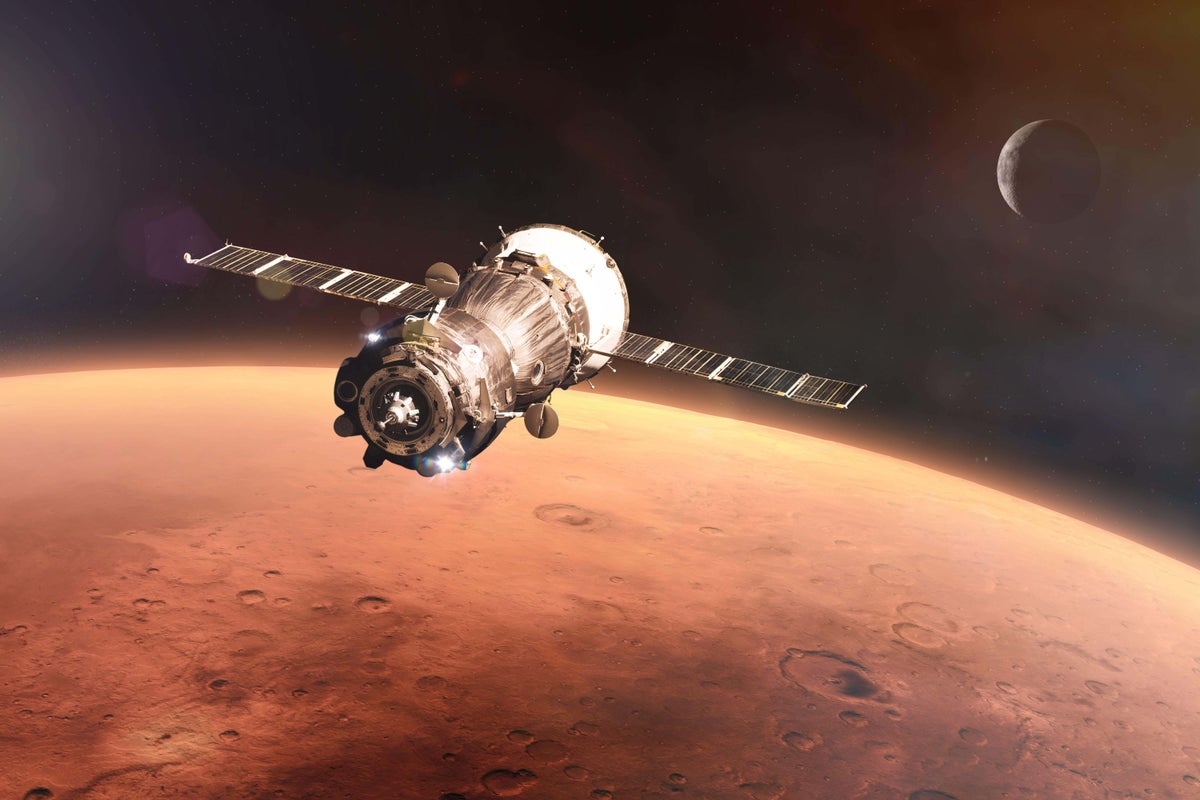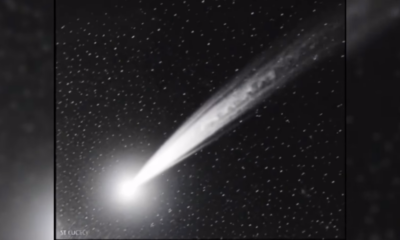Science
NASA Unveils Potential Evidence of Past Life on Mars

NASA has announced groundbreaking findings that may support the theory of past life on Mars. Scientists have detected unique mineral patterns in clay-rich rocks at the edge of the ancient Jezero Crater, once a lake nourished by Martian river systems. This area is the current exploration site for the NASA Perseverance Rover. Dubbed “leopard spots,” these patterns are reminiscent of microbial traces found on Earth, stirring excitement among researchers regarding the possibility of ancient microbial life.
While definitive proof of life on Mars is still pending, this discovery has reignited discussions about the planet’s potential to have harbored life forms and whether such organisms could still exist today. The examination of various Martian environments will be crucial in answering these questions. Scientists note that early Earth and early Mars shared similar conditions, including atmospheres and magnetic fields that provided protection from harmful solar radiation and the presence of liquid water.
As Earth experienced the emergence of life, Mars began to lose its magnetic field as its core cooled. This change exposed the planet to solar radiation, leading to atmospheric erosion. Consequently, Mars transformed into the cold and arid landscape recognized today. Many scientists are skeptical about finding living organisms on the Martian surface due to its harsh conditions, instead focusing on the potential for microbial life hidden in more hospitable environments, such as underground or beneath ice.
Potential habitats for Martian life include caves, areas beneath polar ice sheets, or even deep underground. These locations have analogues on Earth that support microbial ecosystems. The Martian subsurface, which can extend several kilometers deep, is considered one of the most stable habitats, offering conditions more favorable than the inhospitable surface.
On Earth, the deep biosphere is home to a significant portion of microbial life, which survives in rock cracks. These organisms, known as lithoautotrophs, derive energy from the rocks themselves. Methane, a byproduct of some of these microbes, has been detected on Mars, but it can also be produced through non-biological processes, making its presence inconclusive regarding life.
The viability of a Martian deep biosphere depends on several factors, such as the availability of liquid water, energy sources, and suitable temperatures. While there is some debate about the existence of liquid water beneath the Martian surface, such conditions could facilitate essential chemical reactions, providing energy for microbial life. Mars’ lower gravity may also result in less compressed rocks, potentially allowing for more porosity and space for life.
To explore the implications of these findings, scientists study Earth’s extreme environments—known as Mars analogues—to glean insights into how life might exist or persist on Mars. Locations such as the Atacama Desert in South America, the sediments of Lake Salda in Turkey, and salt flats in Utah’s Pilot Valley offer valuable comparisons, although none perfectly replicate Martian conditions.
In addition to field studies, researchers conduct controlled laboratory experiments using specialized “Mars chambers” to simulate Martian atmospheric conditions, radiation exposure, and temperatures. These combined investigations enhance our understanding of Mars’ potential to host life.
Currently, no conclusive evidence of life—past or present—has been found on Mars. NASA’s “leopard spots” provide a promising avenue for exploration but remain inconclusive. If life does exist today, it is likely not widespread, as robotic probes and rovers have yet to detect it.
Looking ahead, significant opportunities for discovery lie ahead. The upcoming European Space Agency (ESA) ExoMars Rosalind Franklin rover is set to drill up to two meters below the Martian surface, providing a chance to study the shallow subsurface for living microorganisms. Most scientists agree that deeper exploration will be necessary, as drilling deep on Earth remains a formidable challenge, and our knowledge of subsurface life is still limited.
Exploring the deep subsurface of Mars presents both scientific and engineering challenges but may ultimately hold the key to discovering existing Martian life.
-

 World2 days ago
World2 days agoCoronation Street’s Shocking Murder Twist Reveals Family Secrets
-

 Entertainment4 months ago
Entertainment4 months agoKate Garraway Sells £2 Million Home Amid Financial Struggles
-

 Entertainment3 months ago
Entertainment3 months agoAnn Ming Reflects on ITV’s ‘I Fought the Law’ Drama
-

 Health3 months ago
Health3 months agoKatie Price Faces New Health Concerns After Cancer Symptoms Resurface
-

 Entertainment3 weeks ago
Entertainment3 weeks agoCoronation Street Fans React as Todd Faces Heartbreaking Choice
-

 World3 weeks ago
World3 weeks agoBailey Announces Heartbreaking Split from Rebecca After Reunion
-

 Entertainment5 days ago
Entertainment5 days agoTwo Stars Evicted from I’m A Celebrity Just Days Before Finale
-

 World5 days ago
World5 days agoKevin Sinfield Exceeds Fundraising Goal Ahead of Final Marathons
-

 Entertainment3 months ago
Entertainment3 months agoCoronation Street’s Carl Webster Faces Trouble with New Affairs
-

 Entertainment3 months ago
Entertainment3 months agoWhere is Tinder Swindler Simon Leviev? Latest Updates Revealed
-

 Entertainment4 months ago
Entertainment4 months agoMarkiplier Addresses AI Controversy During Livestream Response
-

 Science2 months ago
Science2 months agoBrian Cox Addresses Claims of Alien Probe in 3I/ATLAS Discovery





















